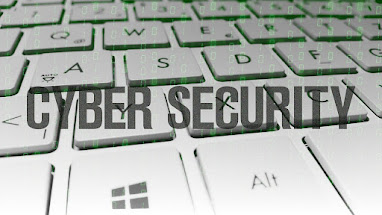"Strengthening Digital Barriers: Recommendations for Resilient Cybersecurity"
Cybersecurity is a discipline that focuses on protecting computer systems, networks, devices, and data from cyberattacks and online threats. Its main objective is to guarantee the confidentiality, integrity and availability of information, avoiding unauthorized access, unwanted modification and destruction of valuable data.
In an increasingly interconnected and technology-dependent world, cybersecurity has become crucial in protecting both individuals and organizations from various online threats, which can include:
Malware: Malicious software designed to damage, infect, or steal information from systems and devices.
Denial-of-service (DDoS) attacks: Attempts to flood a service or network with traffic so that it is unavailable to legitimate users.
Phishing: Attempts to trick people into revealing sensitive information, such as passwords or personal data.
Social engineering: Psychological manipulation to obtain privileged information or unauthorized access to systems.
Ransomware: Blocking or encrypting data to extort victims and demand a ransom for their recovery.
Information leaks: Unauthorized disclosure of sensitive or confidential data.
Attacks on critical infrastructures: Aimed at systems that are vital for the functioning of society, such as public services and communications.
Cybersecurity involves implementing preventative measures, such as the use of firewalls, malware detection software, data encryption, multi-factor authentication, and keeping security patches up to date. In addition, user education and awareness of good security practices are also essential to protect against online threats.
It is important to note that cybersecurity is a constantly evolving field as attackers look for new ways to exploit vulnerabilities and security experts must stay up to date to counter these emerging threats.
Director of Information Technology and Security
As Director of Information Technology (IT), your role is crucial in ensuring the security of your organization's systems and data. Here are some recommendations to improve security in the IT field:
Create a culture of security: Foster a culture in which all employees understand the importance of cybersecurity and are committed to security best practices.
Assess risks and vulnerabilities: Perform regular risk and vulnerability assessments to identify weak spots in the IT infrastructure.
Establish security policies: Develop clear and comprehensive information security policies that address the use of strong passwords, access to sensitive data, device protection, etc.
Implement secure authentication measures: Use multi-factor authentication to add an additional layer of protection when accessing systems and data.
Keep software up-to-date: Make sure all systems and applications are patched and up-to-date to protect against known vulnerabilities.
Defend against malware: Deploy security solutions such as antivirus, anti-malware, and firewalls to protect the network against intrusions and attacks.
Encrypt sensitive data: Use encryption to protect the confidentiality of critical data, both at rest and in transit.
Regular backups: Make regular backups and verify their integrity in order to recover data in the event of an incident.
Continuous monitoring: Establish a security monitoring system that allows you to quickly detect and respond to any suspicious activity.
Train staff: Provide cybersecurity training to all staff, so they are aware of the risks and know how to act in the face of potential threats.
Establish incident response plans: Prepare detailed action plans to respond to security incidents, with clearly defined roles and responsibilities.
Audits and penetration tests: Conduct regular security audits and penetration tests to identify weaknesses and evaluate the effectiveness of the security measures implemented.
Cloud security: If your organization uses cloud services, be sure to select trusted providers and establish appropriate security measures.
Regulatory Compliance: Make sure you comply with the information security laws and regulations applicable to your industry and location.
Stay up-to-date: Stay informed on the latest cybersecurity trends and threats, as the security landscape is constantly changing.
By implementing these recommendations, you will be in a better position to protect your organization's information assets and mitigate the risks associated with cybersecurity. Remember that security is an ongoing and collaborative effort that involves all members of the organization.
IT service user
As a user of Information Technology (IT) services, you also play an important role in the cyber security of the organization in which you work. Here are some recommendations to improve security as a user:
Strong passwords: Use strong and unique passwords for each account, combining letters, numbers and special characters. Avoid using obvious or easily guessed passwords.
Multi-factor authentication: Enable multi-factor authentication whenever possible. This adds an extra layer of security by requiring a second form of verification to access accounts or services.
Updates and patches: Keep the software and applications you use updated with the latest versions and security patches to protect against known vulnerabilities.
Beware of suspicious emails: Do not click links or download attachments in emails that look suspicious or come from unknown senders. They could contain malware or be phishing attempts.
Device Protection: Keep your devices protected with passwords or passcodes. Consider using encryption features and additional security settings if possible.
Avoid using public Wi-Fi networks: Do not access confidential information or conduct sensitive transactions while connected to unsecured public Wi-Fi networks.
Responsible use of personal devices at work: If you use personal devices for work (BYOD), make sure you follow the security policies established by the organization.
Backup your data: Make regular backups of your important data on external storage devices or in the cloud.
Protect confidential information: Do not share confidential information or sensitive data with unauthorized persons. Use secure methods to share information, if necessary.
Security education: Stay informed about the latest cyber security threats and participate in training sessions organized by your company.
Screen lock: Always lock your device when you're not using it, even for short periods.
Access to personal accounts at work: Avoid accessing personal accounts or social networks while in the work environment, especially on company-provided devices.
Beware of social engineering: Be wary of unusual or suspicious requests for personal information or login credentials, even if they appear to come from colleagues or superiors.
Report security incidents: If you suspect or detect a security incident, report it immediately to the IT team or those responsible for security in your organization.
Remember that cyber security is a shared responsibility between all users and the IT team. By following these recommendations, you will be contributing to creating a safer environment for everyone involved in the use of IT services.




Comentarios
Publicar un comentario